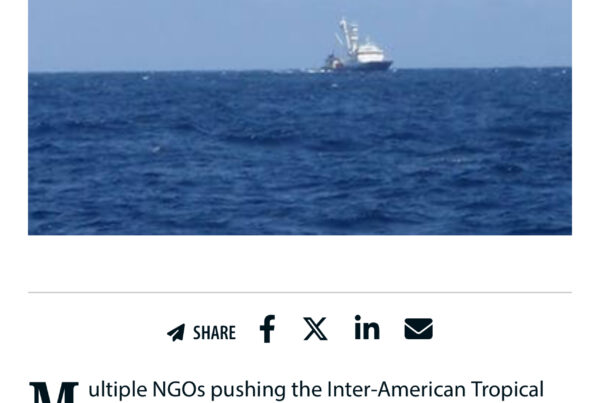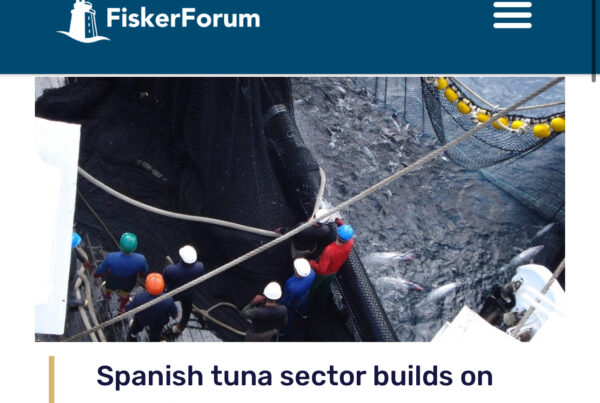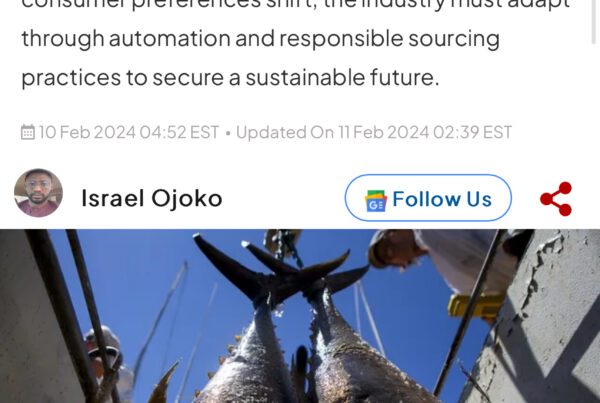Sustainable Seafood Purchasing Boosted by Younger Generations, Pandemic Pressures
Consumers are becoming more interested in the sustainability credentials of the seafood they eat, a long-awaited trend the COVID-19 pandemic may have served to accelerate.
Data from GlobeScan found that in 2020, 38 percent of the consumers surveyed possessed a willingness to reward companies they perceived as responsible, a significant leap up from the roughly 20 percent the firm had historically tallied since 1999.
“There are very significant attitude shifts for consumers across the world,” GlobeScan CEO Chris Coulter said of the findings during the virtual event. “We’re teetering toward something significant when it comes to consumer reaction in the marketplace [related] to sustainability.” Continue reading here (Source: SeafoodSource).
A Big Loss for Illegal Fishing is a Big Win for Tropical Tuna
On Dec. 6, the National Oceanic Atmospheric Administration announced that the United States won new conservation measures for the Pacific tuna and will support inspections to hinder illegal fishing. The Inter-American Tropical Tuna Commission (IATTC) has also adopted controls on floating devices that attract tunas and continues to make efforts to conserve and manage tuna.
With prior solutions to manage tropical tuna approaching its expiration date, the IATTC spent two meetings earlier this year negotiating new measures. As a result, the Commission adopted new three-year management measures for yellowfin, bigeye, and skipjack tunas caught by purse seine (a giant wall of netting deployed around an entire area of fish) and longline vessels in the eastern Pacific Ocean at the October meeting. They imposed a 72-day closure for purse seine vessels each year and apply additional closure days to vessels that exceed a 1,200 metric ton annual limit of bigeye tuna. The controls aim to ensure that tuna fishing in the eastern Pacific Ocean is sustainable. Continue reading here(Source: The Log).
New VMS Technology Hopes to Improve Fisheries Monitoring
As Gabon’s minister of fisheries, agriculture and food security, he helps oversee the African country’s marine protected areas, some of the most extensive in Africa. Covering 27% of Gabon’s Exclusive Economic Zone, these waters are supervised using monitoring technology that tracks larger vessels, which are required to report their catch. But many of Gabon’s fishers run smaller operations that don’t have such systems, or even automated identification.
“Thousands of boats were going out and we didn’t know where they were going or for how long,” Magana-Moussavou said in an interview. And since whatever they caught and where they caught it wasn’t registered, scientists couldn’t tell whether fishing restrictions were being respected or whether fish stocks in protected areas were increasing—or declining. Continue reading here(Source: Captain).
Seafood Price Increases in Japan Outpaced General Price Hikes in Late 2021
The November 2021 consumer price index for Japan showed price increases on both fresh and shelf-stable seafood compared to last year, outpacing general price hikes.
The Statistics Bureau of Japan released the November 2021 pricing information on 24 December, showing that prices rose 0.6 percent overall from the same period last year, and 0.3 percent from October 2021, on a seasonally adjusted basis. Most of that overall price hike was in energy, with food increasing slightly. Without the energy increases taken into account, prices actually fell 0.6 percent annually. Continue reading here (Source: SeafoodSource).
Shark Fishing is Illegal in Hawaii Waters as of Jan 1
hark fishing will be illegal in Hawaii waters starting in 2022.
Act 51 passed in the last legislative session and made it illegal to knowingly capture, entangle or kill any species of shark in state marine waters.
There are exceptions:
- people with special activity permits issued by the state Department of Land and Natural Resources
- shark fishing for public safety purposes as authorized or conducted by DLNR
- sharks taken outside of state marine waters, with required documentation
- sharks captured, entangled, or killed for self-defense or the defense of another
- sharks captured or killed according to a permit issued by DLNR
Getting a Grip on Seafood’s Rising Grab-And-Go Segment
Before shelter-in-place orders swept much of North America in early 2020, Silicon Valley, California, U.S.A.-based strategy, insights, and product development firm Mattson was investigating an up-and-coming segment seemingly tailor-made for the mobile, modern consumer: grab-and-go.
The firm surveyed U.S. consumers online as 2019 came to a close and 2020 began, asking them about their habits as they related to the trend – defined by Mattson as “fresh food and ready-to-drink beverages” optimized for “guests to grab, settle, and go, with packaging that’s designed for transport and/or to enable consumption in-transit.” Continue reading here (Source: SeafoodSource).
Regional Approach Towards Tuna Sustainability
Ocean Outcomes has received a new three year US$1.9mn dollar investment to scale up its sustainable tuna initiatives across Northeast Asia.
The investment will aim to drive further change in longline tuna management and production and support the development of a high seas fisheries strategy to replicate improvement successes in like-fisheries.
Daniel Suddaby, vice president of strategy and impact at Ocean Outcomes said, “We have already brought about 10% of Northeast Asian longline tuna vessels into projects working towards improved practices for the first time. This includes helping one of the world’s largest tuna traders, FCF, move their entire supply chain into certification. Our vision, with generous support from the Moore Foundation, is to build on this success, tripling the number of vessels in improvement projects in the region.” Continue reading here (Source: Far Eastern Agriculture).



